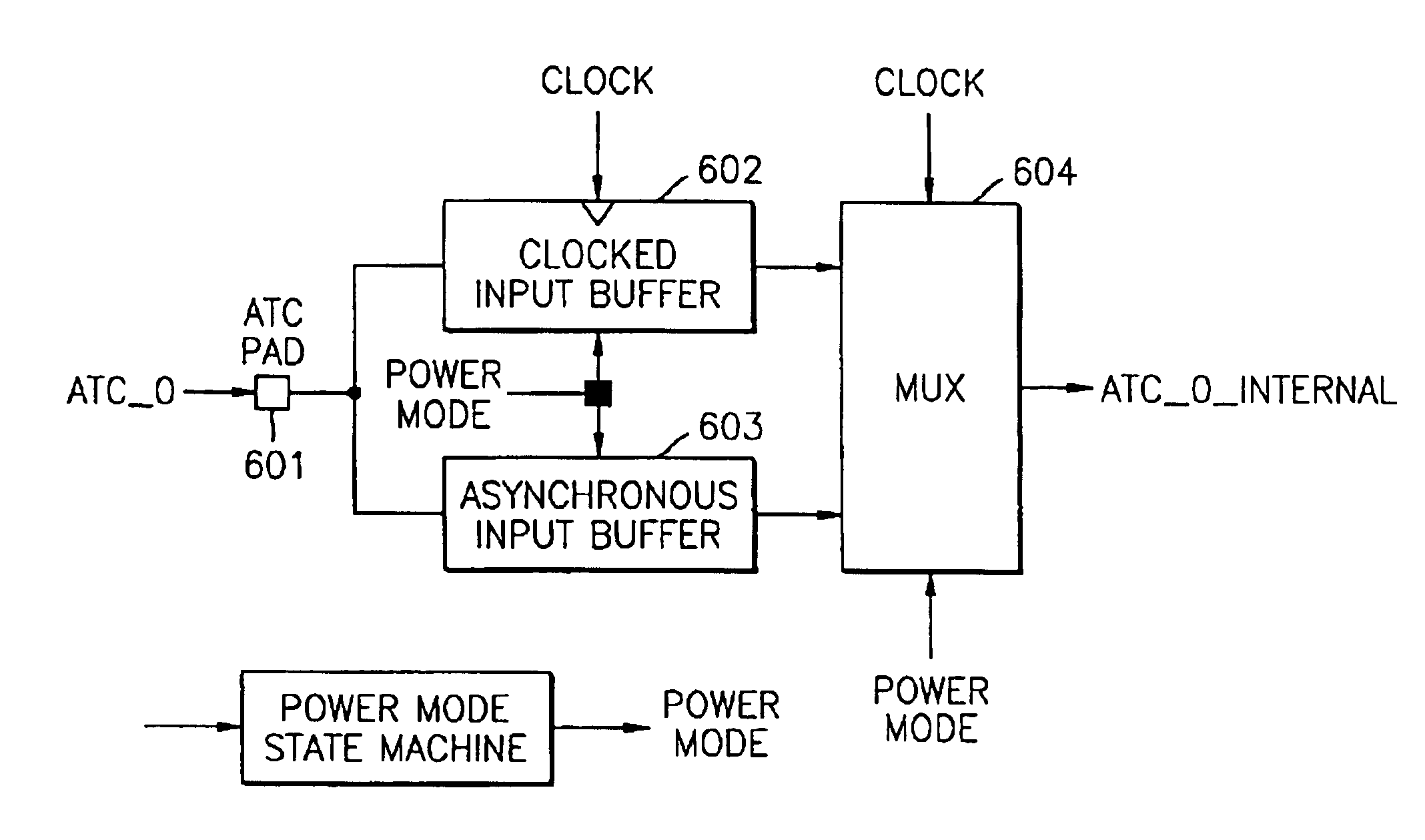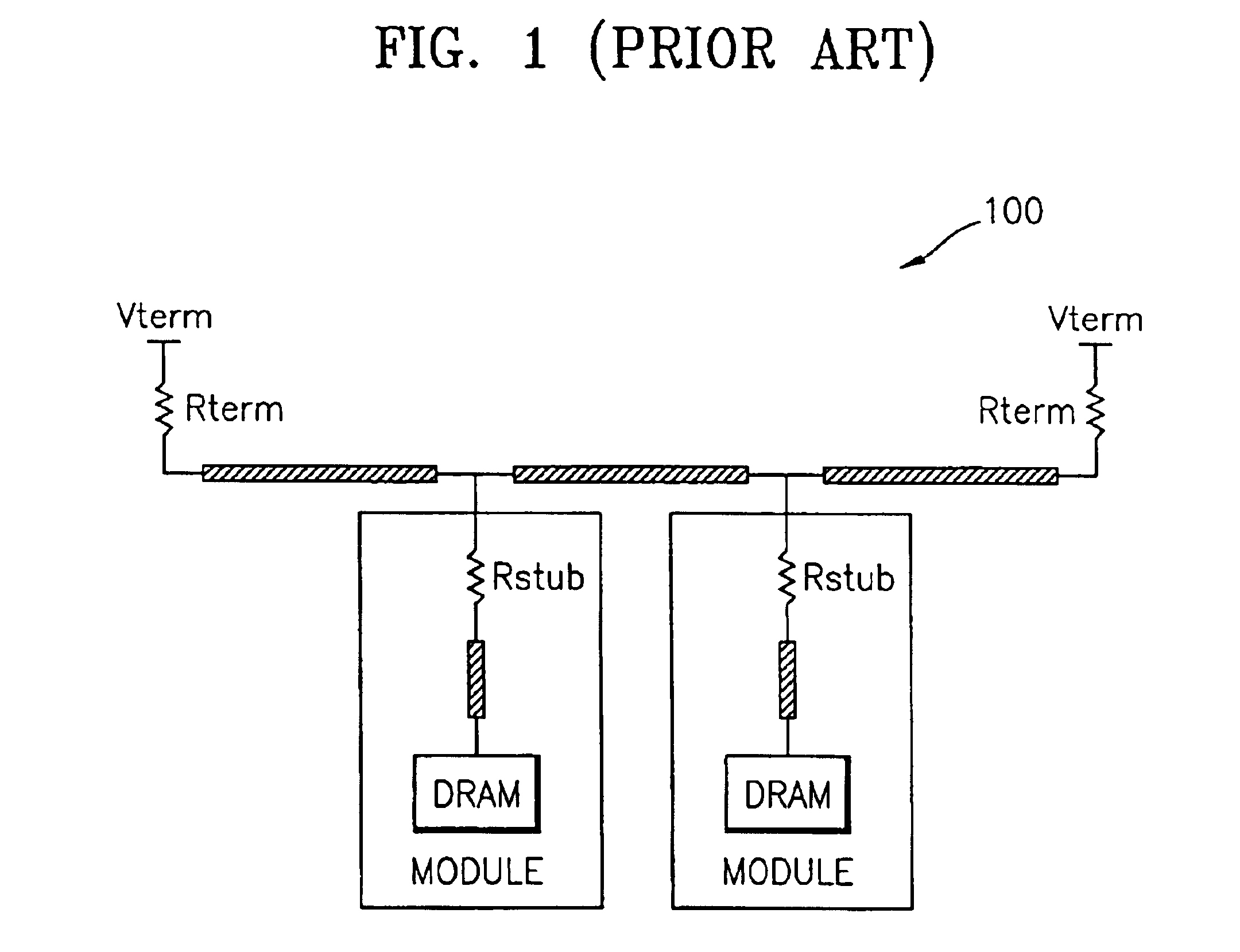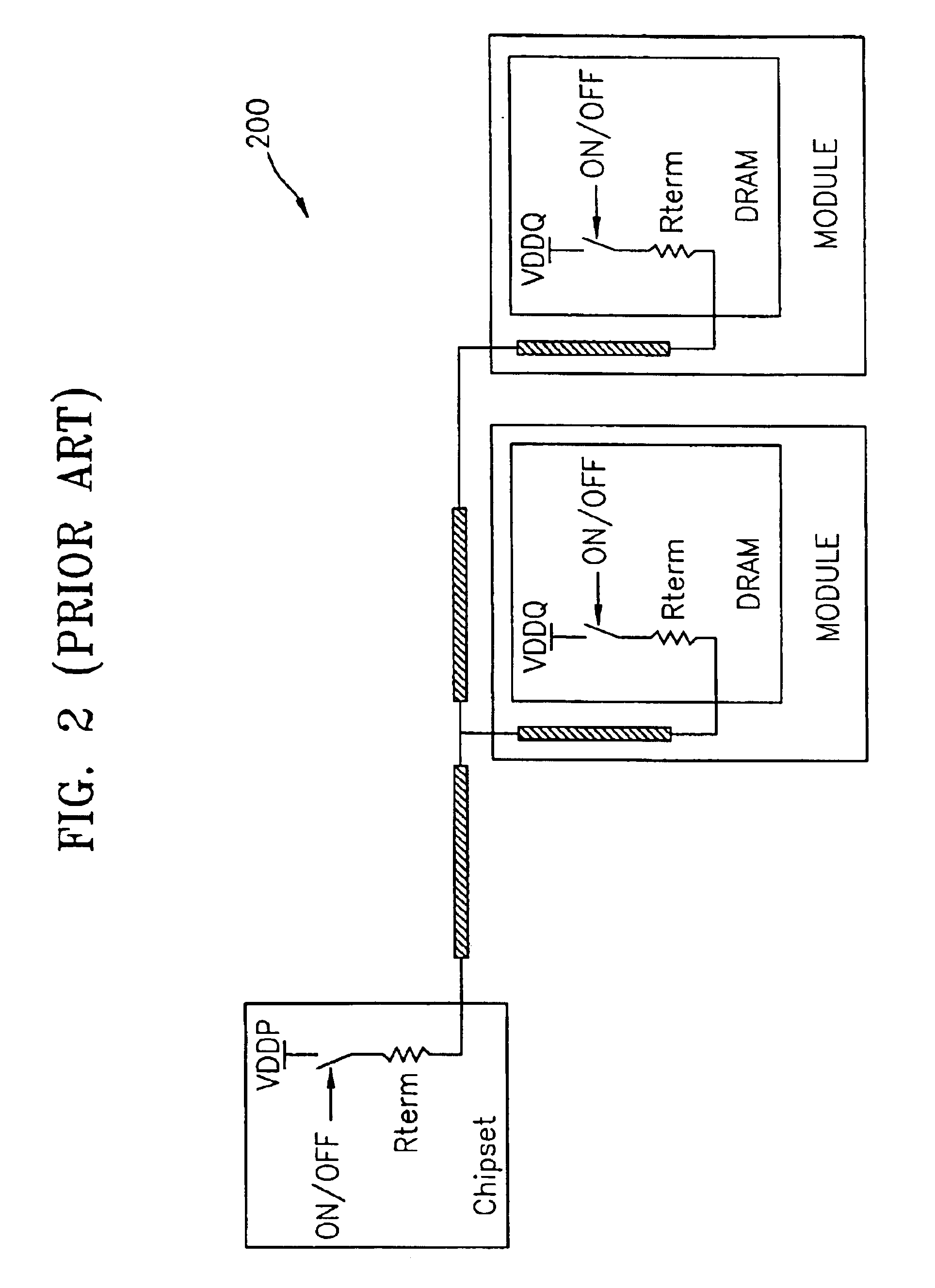Devices and methods for controlling active termination resistors in a memory system
a technology of active termination resistor and memory system, which is applied in the field of memory circuits and systems, can solve the problems of degrading signal integrity, increasing data rate, and affecting the operation of memory system
- Summary
- Abstract
- Description
- Claims
- Application Information
AI Technical Summary
Benefits of technology
Problems solved by technology
Method used
Image
Examples
second embodiment
the present invention will now be described with initial reference to FIG. 11 of the drawings. In this embodiment, DRAM chips positioned on each side of each DiMM module are individually ATC controlled by the combination of common ATC signaling and mode registers. In particular, as shown in FIG. 11, the memory system 1100 includes a chipset 1110, a data bus 1120, a first memory module 1140 in which DRAMs 1160 and 1170 are mounted, and a second memory module 1150 in which DRAMs 1180 and 1190 are mounted. The memory modules 1140 and 1150 may be mounted in card slots (not shown) of the memory system 1100.
The first and second memory modules 1140 and 1150 may be implemented, for example, by a dual in-line memory module (DiMM). Further, while two DRAMs (1160, 1170 and 1180, 1190) are illustrated in FIG. 11 for each of the modules 1140 and 1150, additional DRAMs may be mounted in each of the first and second memory modules 1140 and 1150. Also, each of the chipset 1110 and the DRAMs 1160, 1...
third embodiment
the present invention will now be described with reference to FIG. 17 of the drawings. In this embodiment, DRAM chips positioned on each side of each DiMM module are individually ATC controlled by individual ATC signals issued from the chipset. In particular, as shown in FIG. 17, the memory system 1700 includes a chipset 1710, a data bus 1720, a first memory module 1740 in which DRAMs 1760 and 1770 are mounted, and a second memory module 1750 in which DRAMs 1780 and 1790 are mounted. The memory modules 1740 and 1750 may be mounted in card slots (not shown) of the memory system 1700.
The first and second memory modules 1740 and 1750 may be implemented, for example, by a dual in-line memory module (DiMM). Further, while two DRAMs (1160, 1170 and 1180, 1190) are illustrated in FIG. 17 for each of the modules 1740 and 1750, additional DRAMs may be mounted in each of the first and second memory modules 1740 and 1750. Also, each of the chipset 1710 and the DRAMs 1760, 1770, 1780 and 1790 a...
PUM
 Login to View More
Login to View More Abstract
Description
Claims
Application Information
 Login to View More
Login to View More - R&D
- Intellectual Property
- Life Sciences
- Materials
- Tech Scout
- Unparalleled Data Quality
- Higher Quality Content
- 60% Fewer Hallucinations
Browse by: Latest US Patents, China's latest patents, Technical Efficacy Thesaurus, Application Domain, Technology Topic, Popular Technical Reports.
© 2025 PatSnap. All rights reserved.Legal|Privacy policy|Modern Slavery Act Transparency Statement|Sitemap|About US| Contact US: help@patsnap.com



